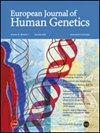GestaltGAN: synthetic photorealistic portraits of individuals with rare genetic disorders
IF 3.7
2区 生物学
Q2 BIOCHEMISTRY & MOLECULAR BIOLOGY
引用次数: 0
Abstract
The facial gestalt (overall facial morphology) is a characteristic clinical feature in many genetic disorders that is often essential for suspecting and establishing a specific diagnosis. Therefore, publishing images of individuals affected by pathogenic variants in disease-associated genes has been an important part of scientific communication. Furthermore, medical imaging data is also crucial for teaching and training deep-learning models such as GestaltMatcher. However, medical data is often sparsely available, and sharing patient images involves risks related to privacy and re-identification. Therefore, we explored whether generative neural networks can be used to synthesize accurate portraits for rare disorders. We modified a StyleGAN architecture and trained it to produce artificial condition-specific portraits for multiple disorders. In addition, we present a technique that generates a sharp and detailed average patient portrait for a given disorder. We trained our GestaltGAN on the 20 most frequent disorders from the GestaltMatcher database. We used REAL-ESRGAN to increase the resolution of portraits from the training data with low-quality and colorized black-and-white images. To augment the model’s understanding of human facial features, an unaffected class was introduced to the training data. We tested the validity of our generated portraits with 63 human experts. Our findings demonstrate the model’s proficiency in generating photorealistic portraits that capture the characteristic features of a disorder while preserving patient privacy. Overall, the output from our approach holds promise for various applications, including visualizations for publications and educational materials and augmenting training data for deep learning.

格式塔根:合成具有罕见遗传疾病个体的逼真肖像。
面部完形(整体面部形态)是许多遗传疾病的典型临床特征,通常是怀疑和建立特定诊断所必需的。因此,发表受疾病相关基因致病性变异影响的个体图像已成为科学传播的重要组成部分。此外,医学影像数据对于教学和训练深度学习模型(如GestaltMatcher)也至关重要。然而,医疗数据通常是稀疏的,并且共享患者图像涉及与隐私和重新识别相关的风险。因此,我们探索生成神经网络是否可以用于合成罕见疾病的准确画像。我们修改了StyleGAN架构,并训练它为多种疾病生成人工的特定条件画像。此外,我们提出了一种技术,产生一个清晰和详细的平均病人肖像为一个给定的障碍。我们用格式塔匹配数据库中最常见的20种疾病来训练完形塔甘。我们使用REAL-ESRGAN从具有低质量和彩色黑白图像的训练数据中提高肖像的分辨率。为了增强模型对人类面部特征的理解,在训练数据中引入了一个未受影响的类。我们用63位人类专家测试了我们生成的肖像的有效性。我们的研究结果证明了该模型在生成逼真的肖像时的熟练程度,这些肖像捕捉了疾病的特征,同时保护了患者的隐私。总的来说,我们的方法的输出为各种应用带来了希望,包括出版物和教育材料的可视化以及深度学习的增强训练数据。
本文章由计算机程序翻译,如有差异,请以英文原文为准。
求助全文
约1分钟内获得全文
求助全文
来源期刊

European Journal of Human Genetics
生物-生化与分子生物学
CiteScore
9.90
自引率
5.80%
发文量
216
审稿时长
2 months
期刊介绍:
The European Journal of Human Genetics is the official journal of the European Society of Human Genetics, publishing high-quality, original research papers, short reports and reviews in the rapidly expanding field of human genetics and genomics. It covers molecular, clinical and cytogenetics, interfacing between advanced biomedical research and the clinician, and bridging the great diversity of facilities, resources and viewpoints in the genetics community.
Key areas include:
-Monogenic and multifactorial disorders
-Development and malformation
-Hereditary cancer
-Medical Genomics
-Gene mapping and functional studies
-Genotype-phenotype correlations
-Genetic variation and genome diversity
-Statistical and computational genetics
-Bioinformatics
-Advances in diagnostics
-Therapy and prevention
-Animal models
-Genetic services
-Community genetics
 求助内容:
求助内容: 应助结果提醒方式:
应助结果提醒方式:


